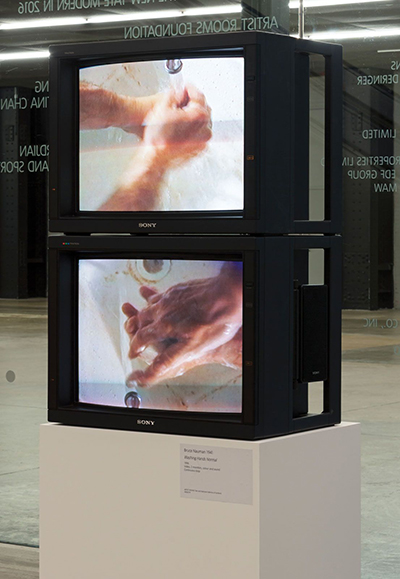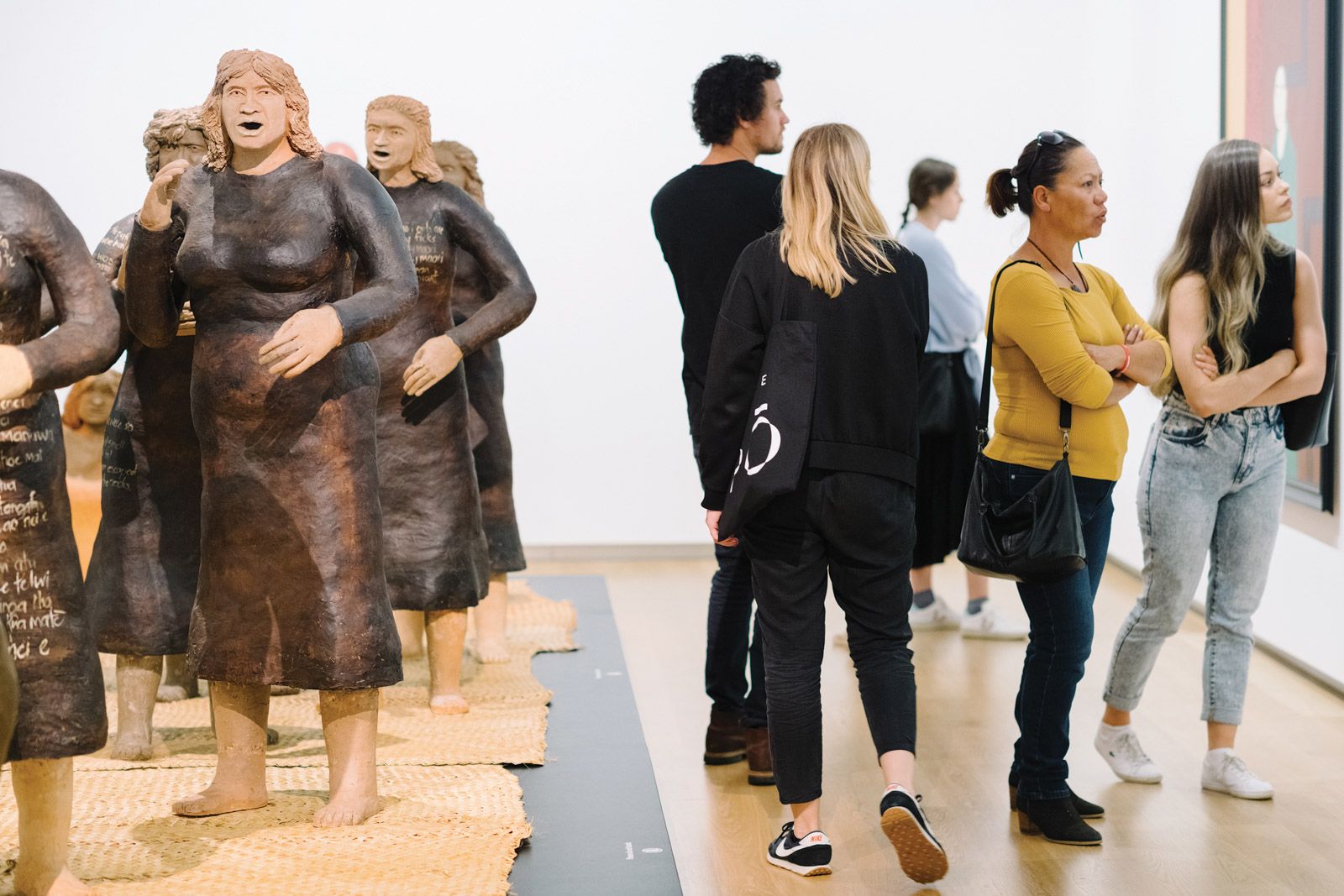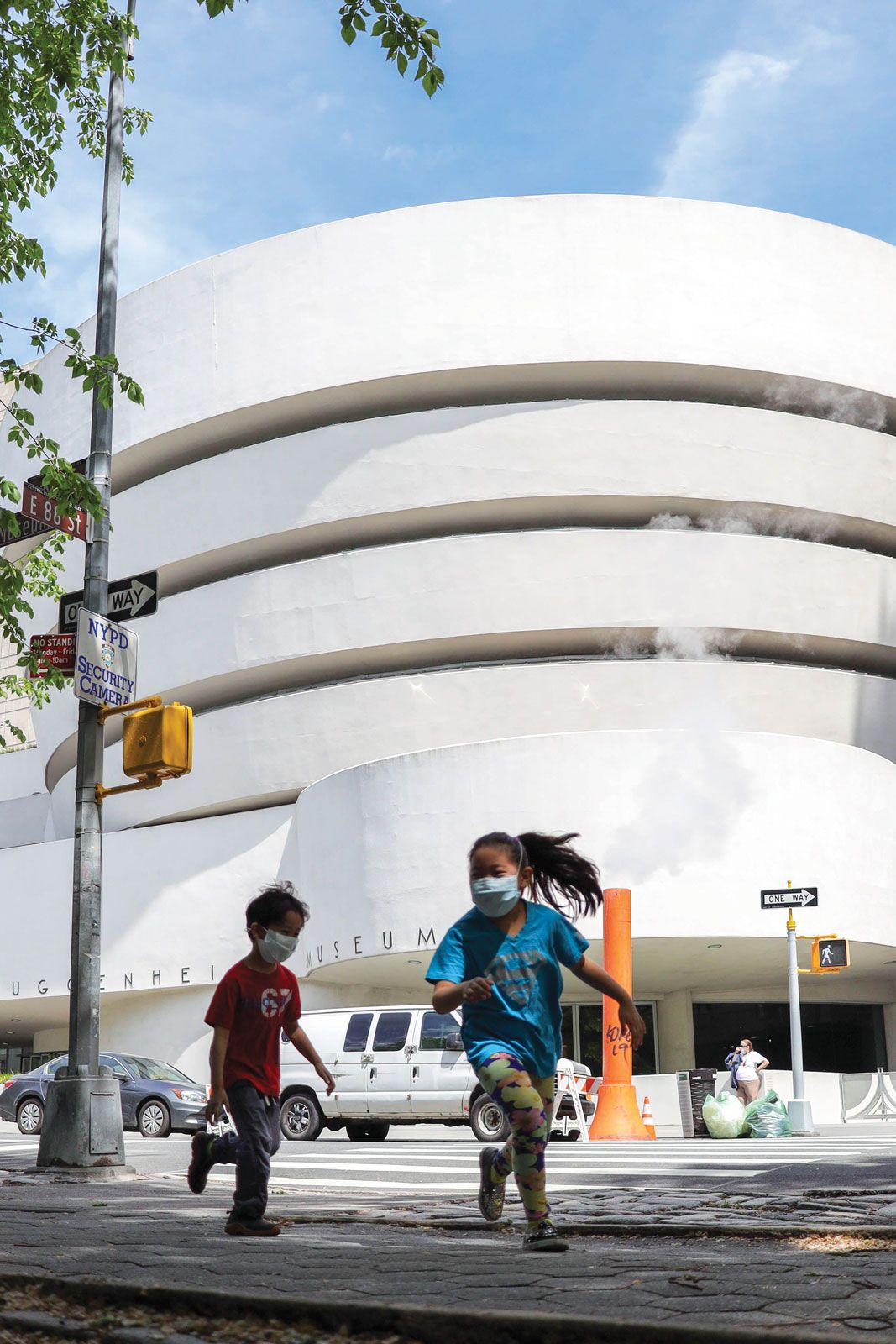The Musée du Louvre in Paris was the most visited museum in 2020, with its blockbuster Leonardo exhibition attracting more than 10,000 a day. Overall, 2.7 million people visited the museum—72% fewer than in 2019 Reuters/Alamy Stock Photo.
Emily Sharpe and José da Silva*, Visitor Figures 2020: top 100 art museums revealed as attendance drops by 77% worldwide, The Art Newspaper, 30 March 2021
* With additional reporting by Martin Bailey. Research conducted by Federico Florian and Victoria Stapley-Brown
The Art Newspaper’s annual survey shows how the pandemic had a devastating impact on museums around the world—but there were some silver linings
In an ordinary year, more than nine million visitors jostle for position in front of the Mona Lisa or Delacroix’s Liberty Leading the People at the Musée du Louvre in Paris, and half a million fashion-forward members of the public turn out for the spring opening of the Costume Institute’s annual exhibition at the Metropolitan Museum of Art in New York. But there was nothing ordinary about 2020 and the widespread devastation caused by the global Covid-19 pandemic. Our annual survey reveals that last year overall attendance of the world’s 100 most- visited art museums dropped by a staggering 77% in 2020—from 230 million in 2019 to just 54 million as museums worldwide were forced to close.
Exhibition visitor figures have been at the heart of The Art Newspaper’s annual survey for more than 20 years. But our survey shifted focus this year when shows were postponed or cancelled. So, while we have mentioned a few key exhibitions staged pre-, post- and in-between lockdowns, this information is included as context for the crux of the report: overall museum visitor figures.
Museums were shut for a staggering 41,000 days in total—more than a century’s worth of visits missed last year
The year began with reports from Wuhan about the recently identified Covid-19 virus that was spreading rapidly across the Chinese city. By the end of January, the town was in lockdown and the World Health Organization (WHO) had declared the outbreak “a Public Health Emergency of International Concern”. Staff at one of Wuhan’s largest museums, the Hubei Provincial Museum, which was closed from 23 January to 13 June, were not allowed to travel to and from work. So its director Fang Qin packed up pillows and cooking equipment and joined more than 70 staff in setting up camp at the museum for several months in order to take care of its collection.
Beijing’s National Museum of China is the second most popular museum in our survey with 1.6 million visitors. The museum closed for three months from 25 January as the Beijing authorities cancelled Chinese New Year celebrations. When the museum did reopen, its maximum capacity was reduced by 90% at first—from a potential 30,000 to 3,000 visitors per day—and then gradually eased as the year went on to 8,000 per day by August. The second most-visited Asian museum, and a newcomer to our survey, is Japan’s 21st Century Museum of Contemporary Art in Kanazawa, which had 971,000 visitors in 2020. It was closed for an additional 66 days last year, which puts it at the lower end of the closure spectrum and reflects the country’s eschewing of strict lockdowns.
Of the museums we polled, more than 280 provided the number of days they closed last year because of the health crisis. On average, museums were shut for an extra 145 days, which adds up to a staggering 41,000 days in total—more than a century’s worth of museum visits missed last year.
European crises
France and Germany were the first European countries to confirm Covid-19 cases, and Italy and Spain imposed the initial nationwide lockdowns in Europe. By mid-March, as the WHO officially designated Covid-19 as a pandemic, an estimated 250 million Europeans went into their first lockdown. While government responses varied, with France and Italy facing longer confinement periods and stricter travel restrictions than, for example, Denmark and Finland, on average the European museums we surveyed were closed for 112 extra days in 2020. While nearly 83 million people went to the top 100 European museums in 2019, the 2020 figure was just 24 million.
European cities saw a steep decline in international tourism last year, especially during the lucrative summer months. Paris received just 5% of its usual number of tourists last summer, according to a report by the UN’s World Tourism Organization. The French capital’s three major art museums—the Louvre, Centre Pompidou and Musée d’Orsay—saw a 73% drop in attendance overall, down to 4.5 million from 16.5 million in 2019. Around 2.7 million visited the Louvre, which, despite a 72% dip, is the most-visited museum in our survey. This admirable figure was helped by its once-in-a-lifetime Leonardo exhibition, which closed in February. It drew more than 10,000 visitors a day, making it the museum’s most-visited show ever. Despite this, the Louvre reported losses of around €90m in 2020. The Fondation Louis Vuitton was closed for a whopping 226 days and had just 253,000 visitors, down from 800,000 in 2019.
Lost tourism and lockdowns also affected Spain’s big museums: the Prado in Madrid saw a 76% drop (from 3.5 million in 2019 to 852,000), while the Reina Sofía’s figures decreased by 72% (from 4.4 million in 2019 to 1.2 million). The pandemic forced the Prado to close for an extra 85 days, reopening at less than half its visitor capacity, while the Reina Sofía was closed for an additional 80 days and reopened at just 33% capacity. Meanwhile, visits to Italian heavyweights—the Vatican Museums, and the Uffizi and Accademia galleries in Florence—dropped by 81%, 72% and 81% respectively. Despite being closed for an extra 193 days—one of the highest closure rates of the European museums surveyed—attendance at the Palazzo Reale in Milan dropped by just 48%, to around 391,000. The National Gallery of Ireland in Dublin was closed for around the same amount of time, 186 days, which resulted in a 73% drop in visitors.

British ups and downs
In the UK, London’s Tate Modern was the most visited museum, a position held by the British Museum (BM) every year for the past decade except for 2018, when the Tate pipped it to the top spot thanks, in part, to a Picasso exhibition seen by half a million people. Last year’s change was likely due to the BM being closed for 208 days as opposed to Tate Modern’s 173.
Many of the UK’s major museums rely heavily on tourism: the BM’s audience was made up of 77% foreign visitors for the 2019/20 financial year, while the National Gallery’s is usually “around 60% annually”, according to a spokeswoman. Provisional data from the UK’s Office for National Statistics (ONS) shows that, in the second quarter of 2020, when the UK went into its first lockdown, the number of visits by overseas residents fell by 96% compared to the same period in 2019.
On average, UK museums saw a 77% drop in attendance, and were closed on average for more than half of 2020. When institutions eventually reopened, all major museums had restrictions on visitor numbers. Although they varied, most museums were typically only able to operate at around 20% to 30% of normal capacity.
The steep decline in footfall contributed to huge financial losses. The self-generated income of the Tate’s four museums fell from £94m in the 2019/20 financial year to an estimated £38m for 2020/21, a 60% drop. Similarly, the Victoria and Albert Museum saw a 63% loss of income, with its self-generated funds falling from £64m to £24m. The BM would not supply its raw figures, but a spokesperson says that income generated by visitors has plummeted by more 90% of the budgeted sum. The National Gallery emerged relatively unscathed, losing only £14m, according to a museum spokesperson. It is important to note that, as well as reflecting loss of income through attendance (tickets sales, retail, etc.), these figures also include donations, which can be generated without getting people through the door. Most fortunate was the National Portrait Gallery, which had already planned to close for major building works in June but brought this forward by three months because of the pandemic.
However, there were some success stories. A touring exhibition of Tutankhamun treasures from the Grand Egyptian Museum in Cairo was seen by more than 580,000 people at the Saatchi Gallery, despite peak tickets costing almost £40, while Tate Modern’s Olafur Eliasson show was seen by more than half a million people.
The American picture
The US has the grim distinction of having both the highest number of Covid-19 related deaths (around 550,000) and the most cases in the world. Because each state sets its own social distancing restrictions and safety protocols, US museums have had to adhere to widely different rules. The number of extra days institutions were closed last year ranged from 75 (Crystal Bridges Museum of American Art in Arkansas) to 293 (National Museum of the American Indian in New York). Many Californian museums closed last March and remained shut for most, if not all, of last year, whereas Crystal Bridges reopened in June. That being said, the Bentonville museum had 353,000 visitors, half the number of 2019. Earlier this year a spokeswoman for San Francisco’s De Young museum, which had 78% fewer visitors in 2020 as a result of being closed an extra 191 days, told The Art Newspaper that it was “facing losses of around $750,000 in revenue for every month we need to stay closed”. And the Los Angeles County Museum of Art has sought to alleviate some of its financial burden by putting its director’s $2m house on the market.
With 2.2 million visitors, New York’s four art behemoths—the Metropolitan Museum of Art (1.1 million), the Museum of Modern Art (706,000), the Whitney Museum of American Art (233,000) and the Solomon R. Guggenheim Museum (154,000)—account for 91% of the 2.4 million visitors to the city’s museums we surveyed. The same institutions saw 11 million visitors in 2019, with the Guggenheim seeing the most severe drop at 88%. While many New York museums were closed for around six months, the Guggenheim was shut for more than seven months and reopened at just 25% capacity. The health crisis put both a wrench in the Met’s plans to mark its 150th anniversary and contributed to a loss in revenue of around $150m. But since reopening at 25% capacity in August, visitors, 90% of whom are local, average at 4,065 daily.
Museums in Washington, DC, faced a second year of unexpected closures, having already been plagued by government shutdowns in late 2018 and early 2019. The National Gallery of Art (NGA) was closed for an extra 138 days, while the Smithsonian American Art Museum (SAAM) and the National Portrait Gallery (NPG), which share an entrance and so have the same visitor figures, were shut for an additional 225 days. The attendance at the NGA dropped by 82% to 730,000 from 4.1 million in 2019, and the SAAM and NPG had 321,000, which is 81% down from 2019’s 1.7 million.
Brazil has emerged as an epicentre of the pandemic, with the most Covid-19 cases after the US. Data from the 19 Brazilian institutions we surveyed shows that museums were closed for an average of 203 days last year, which is more than any other country in our report. The Centro Cultural Banco do Brasil, the cultural arm of the country’s largest bank that stages crowd-pleasing exhibitions across its locations in Brasília, São Paulo, Rio de Janeiro and Belo Horizonte, had a combined attendance of 1.6 million. This is a 72% decrease from 5.6 million in 2019. Visitation to the Museu de Arte de São Paulo Assis Chateaubriand (140,738), the Museu de Arte Moderna de São Paulo (44,176) and the Pinacoteca de São Paulo (135,518) declined by 81%, 79% and 75% respectively. The Instituto Tomie Ohtake in São Paulo saw a 45% drop in attendance to 309,760. Despite a surge in Covid-19 cases, Brazilian arts institutions were facing mounting pressure from the government to remain open as we went to press. Throughout the health crisis, the country’s president Jair Bolsonaro has pushed for Brazil’s businesses to stay open, and last month he suspended vital cultural funding in regions with Covid-19 restrictions.

New Zealand success
New Zealand has been one of the great success stories of the pandemic, thanks to the early implementation of restrictions, with several quick and severe lockdowns. Its museums were closed for less time than the global average and on the whole faced no limits on capacity when they reopened, unlike most other museums worldwide. The least affected of its major museums was the Christchurch Art Gallery Te Puna o Waiwhetū, which was closed for 54 days, and saw a drop in visitors of just 28%. The country’s most popular institution, the Museum of New Zealand Te Papa Tongare-wa in Wellington, had almost 838,000 visitors—46% less than in 2019. And although the Auckland Art Gallery Toi o Tāmaki had to close for 101 days and cancel major Picasso and Monet exhibitions due to travel restrictions, there was a silver lining. The museum decided to “bring forward and amplify Toi Tū Toi Ora: Contemporary Māori Art, a watershed exhibition of art by 111 of our Indigenous artists”, says the director Kirsten Lacy. The exhibition, she adds, was “the largest [show] in [the museum’s] entire 133-year history”.
While the data in our survey reveals the devastation the pandemic wrought on art institutions around the world, we would like to acknowledge those directly affected by museums’ closures and cuts: specifically, we would like to thank the hundreds of press officers who diligently filled in our survey and answered our many questions at a time when many are working from home, have had their hours reduced and seen colleagues furloughed.
Read all our Visitor Figures 2020 content here
• Venues marked with a dagger (†) indicate institutions with more than one museum building. We have separated the venues to give a more accurate reflection of footfall. The institutions’ additional venues and combined totals are: Metropolitan Museum of Art includes attendance for Met Cloisters (61,316) but not for the Met Breuer (41,015) which closed permanently on 13 March 2020; NGV International (NGV Australia: 130,323; total for NGV: 767,186); SAAM shares a building with the NPG (Renwick Gallery: 66,144; total SAAM and Renwick: 387,430); MMCA Seoul (MMCA Gwacheon: 154,333; MMCA Deoksugung: 134,868; MMCA Cheongju: 59,163; total for MMCA: 828,855); GOMA and QAG (total for both: 601,061); Scottish National Gallery (Scottish National Gallery of Modern Art: 148,204; Scottish National Portrait Gallery: 85,838; total for National Galleries of Scotland: 538,602); Getty Center (Getty Villa: 81,140; total for Getty: 348,175); Upper Belvedere (Lower Belvedere: 38,260; Belvedere 21: 33,183; total for Galerie Belvedere: 343,064).
Update: This article was updated on 30 March with the figures for the National Museum of China


